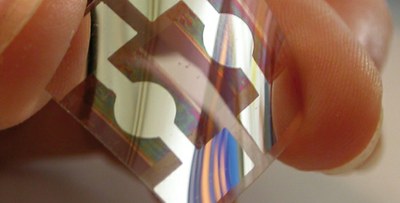Energy: ENEA promotes the photovoltaics of the future, increasing energy output up to 40%
22/6/2015
 Super-efficient and low-cost photovoltaic cells with an energy output up to 40% and novel materials at a lower cost than conventional silicon solar cells. This is the photovoltaics of the future, the key topic of the first of a series of conferences on the Electrical Power System Research, held within a program Agreement between ENEA and the Ministry of the Economic Development.
Super-efficient and low-cost photovoltaic cells with an energy output up to 40% and novel materials at a lower cost than conventional silicon solar cells. This is the photovoltaics of the future, the key topic of the first of a series of conferences on the Electrical Power System Research, held within a program Agreement between ENEA and the Ministry of the Economic Development.
The ENEA’S activities on photovoltaics are targeted at developing advanced technologies to implement high-efficiency, low-cost modules converting sunlight into electricity with the aim of promoting innovation and competitiveness of the domestic productive system, even in the absence of state incentives.
The research on solar cells, conducted at ENEA within the Electrical Power Research System, has been conducive to the development of low-cost, easily disposable organic and inorganic materials with an energy yield of over 20%.
“Bringing greater focus on innovation of materials and production processes, with an impact on the costs and the factors involved in the conversion of sunlight into electricity, means developing a cost-competitive photovoltaic technology attractive to industry” Paola Delli Veneri at ENEA points out.
The research on photovoltaic devices and materials carried out at ENEA builds upon a long-standing expertise and the Electrical Power System Research could help slash electricity bills” she adds.
The ENEA‘s studies within the Electrical Power System Research have brought about new materials allowing to improve functioning of devices, such as the studies on the development of heterojunction solar cells with an energy output over 17%, that can be employed both as an independent solar device and a posterior component of a ultra-high efficiency tandem device.
In this area of research, ENEA has developed novel materials for the anterior component of the tandem solar device, such as the CZTS solar cell, a copper, zinc and tin sulfide which is easily available, low-cost and easily disposable.
Or the studies on the perovskite crystals, that have attracted the interest of the scientific community because they allow to produce hybrid solar cells.
Finally, in the field of organic solar cells ENEA has achieved an efficiency of over 10%.
On the basis of the results obtained by the studies carried out, ENEA has started numerous collaborations with national companies, particularly with the 3SUN, which is currently dedicated to manufacturing thin film silicon cells in Sicily.
For more information please contact:
Paola Delli Veneri, Portici Research Center, paola.delliveneri@enea.it
